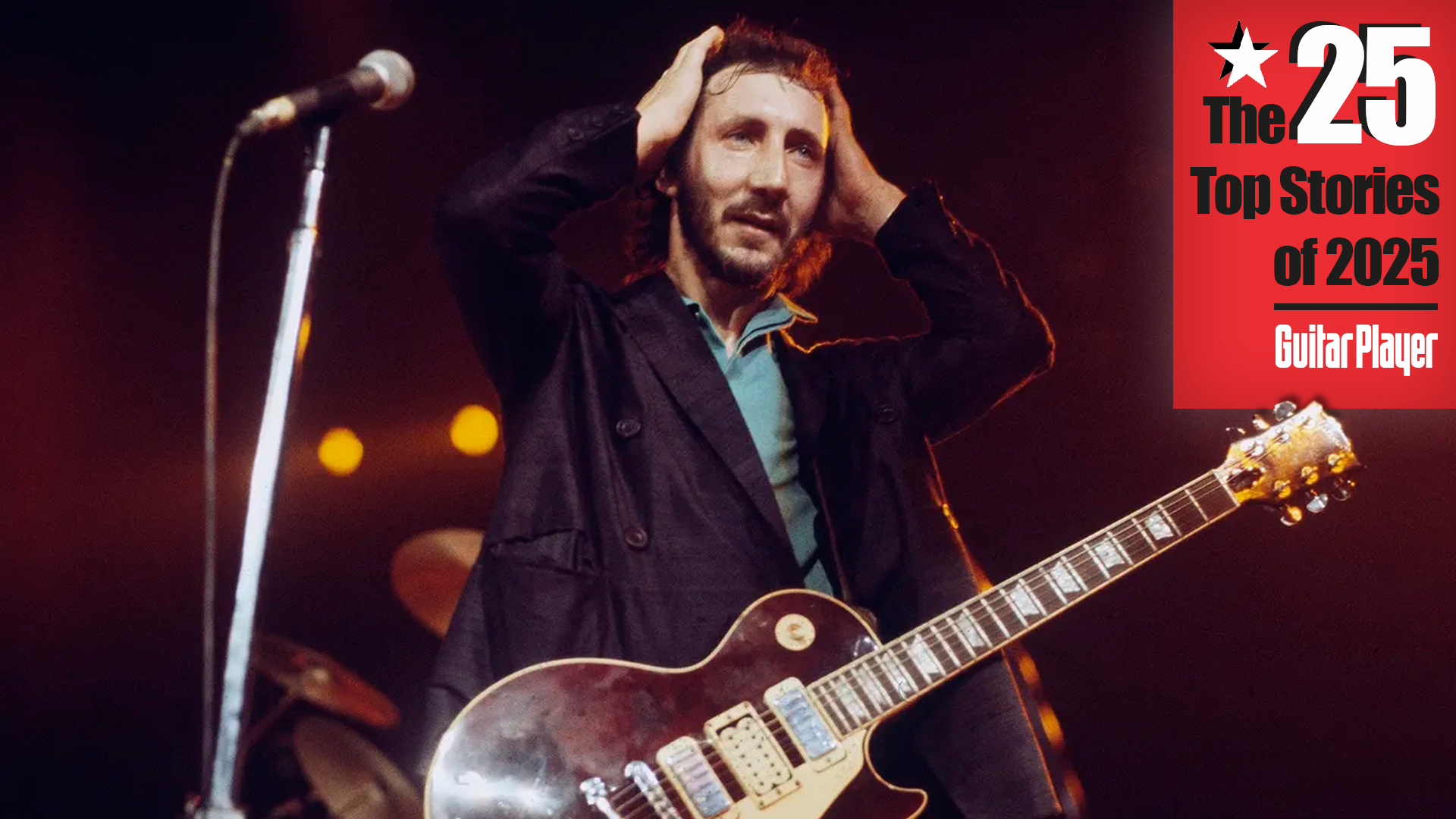“The Planets Were All in Perfect Alignment”: Paul Stanley on ‘Destroyer’ – the Defining Album that Turned Kiss Into National Rock Stars
This 1976 classic saw the New York City glam-rockers become Gods of Thunder.
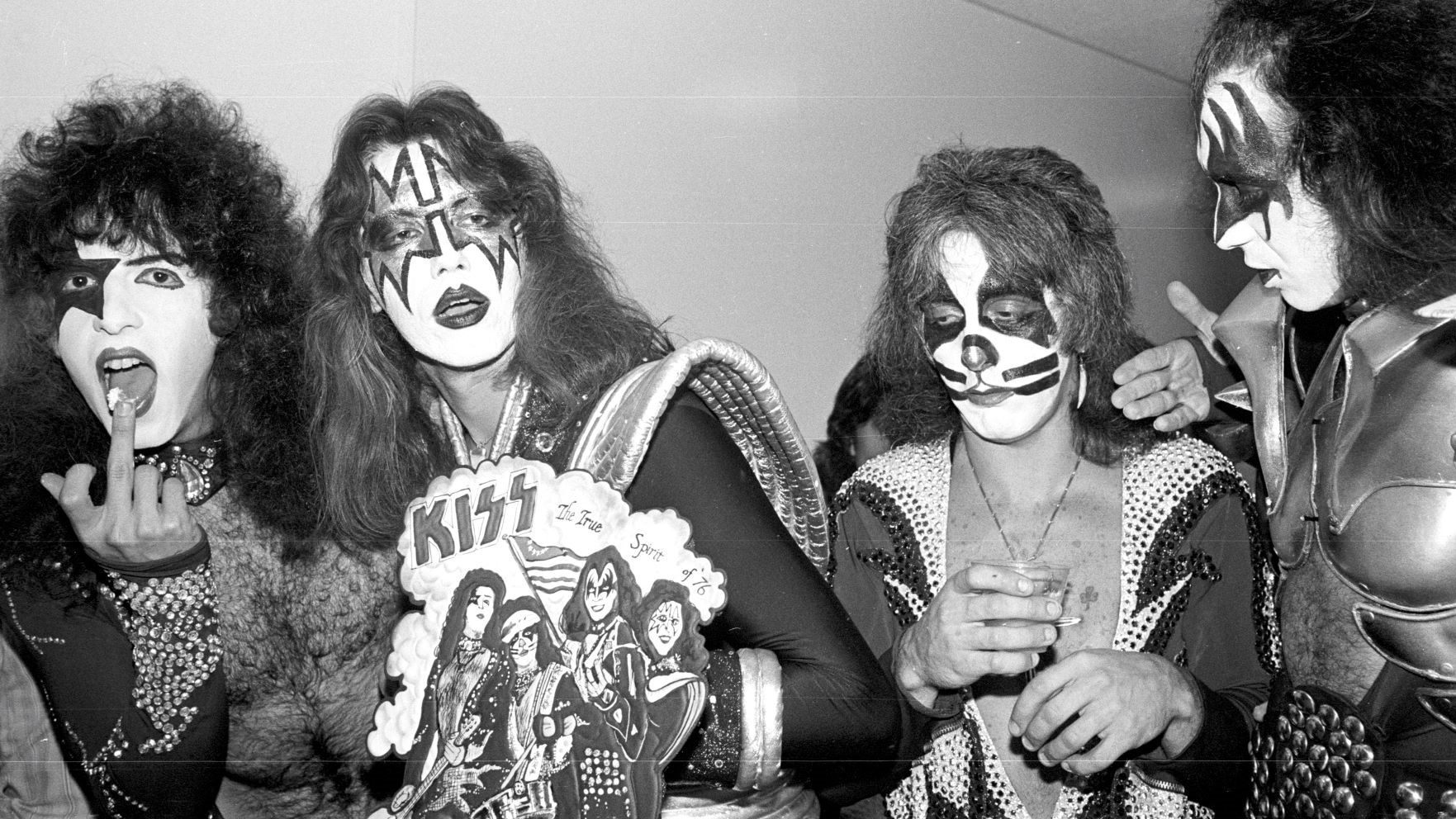
Every long-running band has its defining album, a creation that emerges from a seemingly perfect convergence of creative forces. For the Beatles it was Sgt. Peppers’ Lonely Hearts Club Band. For the Rolling Stones it was Exile on Main Street. Numerous other examples abound, from the Beach Boys’ Pet Sounds to Pink Floyd’s The Dark Side of the Moon.
For Kiss, the magic arrived on Destroyer, an album on which the forces didn’t combine as much as they cascaded forth like a fountain of stage blood. Coming after the clunky opening trio of Kiss, Hotter Than Hell and Dressed to Kill, 1976’s Destroyer was the studio follow-up on which the New York City glam rockers fine-tuned their mix of brawny rock and roll and theatricality into a musical vision that was both sonic and cinematic in its scope.
Yes, it has the hits, including “Detroit Rock City,” “Shout It Out Loud,” “Gods of Thunder,” “Flaming Youth” and “Beth,” but Destroyer has something more: a cohesiveness of sound and vision – amid a sonic collage that includes choir, orchestra and keyboards – that in 1976 elevated Kiss to the ranks of rock and roll gods.
To many fans, it was and remains their greatest achievement.
Although the album’s anniversary has been celebrated before – witness 2012’s Destroyer: Resurrected, on which producer Bob Ezrin sweetened and amended the production – Kiss have gone all out with the new Destroyer 45th Anniversary Super-Deluxe Edition. Comprising four CDs, a Blu-ray audio surround-sound disc mixed by Steve Wilson, a 68-page hardcover book and numerous collectibles – including a replica 1976 Kiss Army Kit – it’s a celebratory box every true fan will rush to own. Best of all, it offers a total of 73 tracks, 48 of which are previously unreleased. Bear in mind, the completed album had a mere 10 songs, including the hidden closing track, “Rock and Roll Party.”
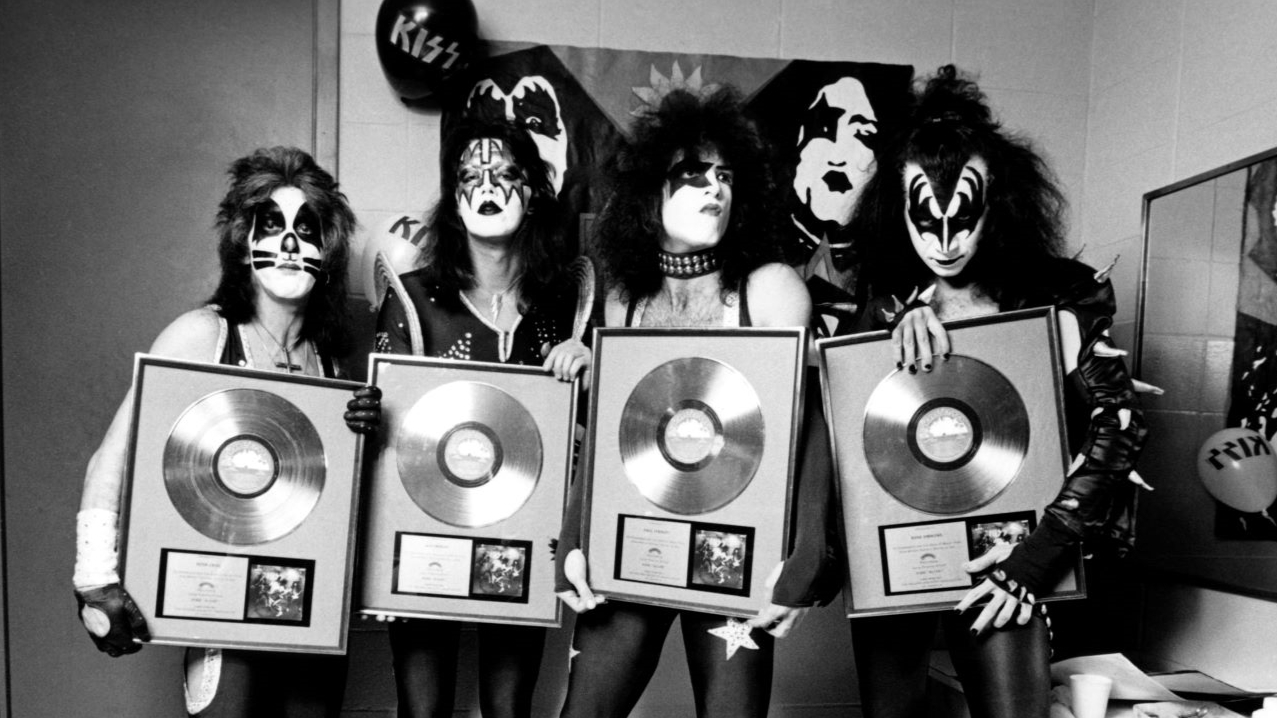
But just what was it that inspired Kiss to such heights some three studio albums into their career? Remarkably, it was their first live album, Alive!, released one year earlier. The album had been a runaway success, giving the band its first smash hit.
“You know how McDonald’s have a sign that ticks over every time they sell another burger?” guitarist Paul Stanley asks. “Kiss Alive! was like that for us. We went from 70,000 sales to a million sales, and it just kept going.”
All the latest guitar news, interviews, lessons, reviews, deals and more, direct to your inbox!
For America’s most flamboyant sons, Kiss Alive! was a genuine education, proving in Gold and Platinum currency that the appeal of the band was based on more than just music. Which is not to devalue the studio recordings from 1974 to ’75, as some of the most popular Kiss songs ever were put to tape in that period, including the chart hit “Rock and Roll All Nite.”
Think of it like this: If Kiss, Hotter Than Hell and Dressed to Kill were the foreplay, the whisper in the ear and the hand on the thigh, then Kiss Alive! was the moment when the passion finally peaked. It was all there: the heaving and the humping, the solos and the raps… the whole nine yards.
“Kiss Alive! was what we stood for,” Stanley affirms, “the embodiment and the magnification of everything we were as a band. It was Kiss on steroids.”
For Stanley, Gene Simmons, Peter Criss and Ace Frehley, the pressure was well and truly on. Achieving success is one thing; following it up is another. If Kiss Alive! was to be a springboard, they couldn’t afford to rest on their platform shoes. They returned to the studio – the Record Plant in New York – knowing that, however good their songs were, they needed a cheerleader and guru who would leave no stone unturned in the quest for musical greatness.
Enter producer Bob Ezrin.
“I’d first crossed paths with Bob up in Canada, where I was doing some promotion,” Stanley recounts. “He asked me if I liked the sound of my own records, and because I was young and full of piss and vinegar, I said that I did.
“However, I was well aware of what he could do in the studio, of the work he’d done with Alice Cooper.”
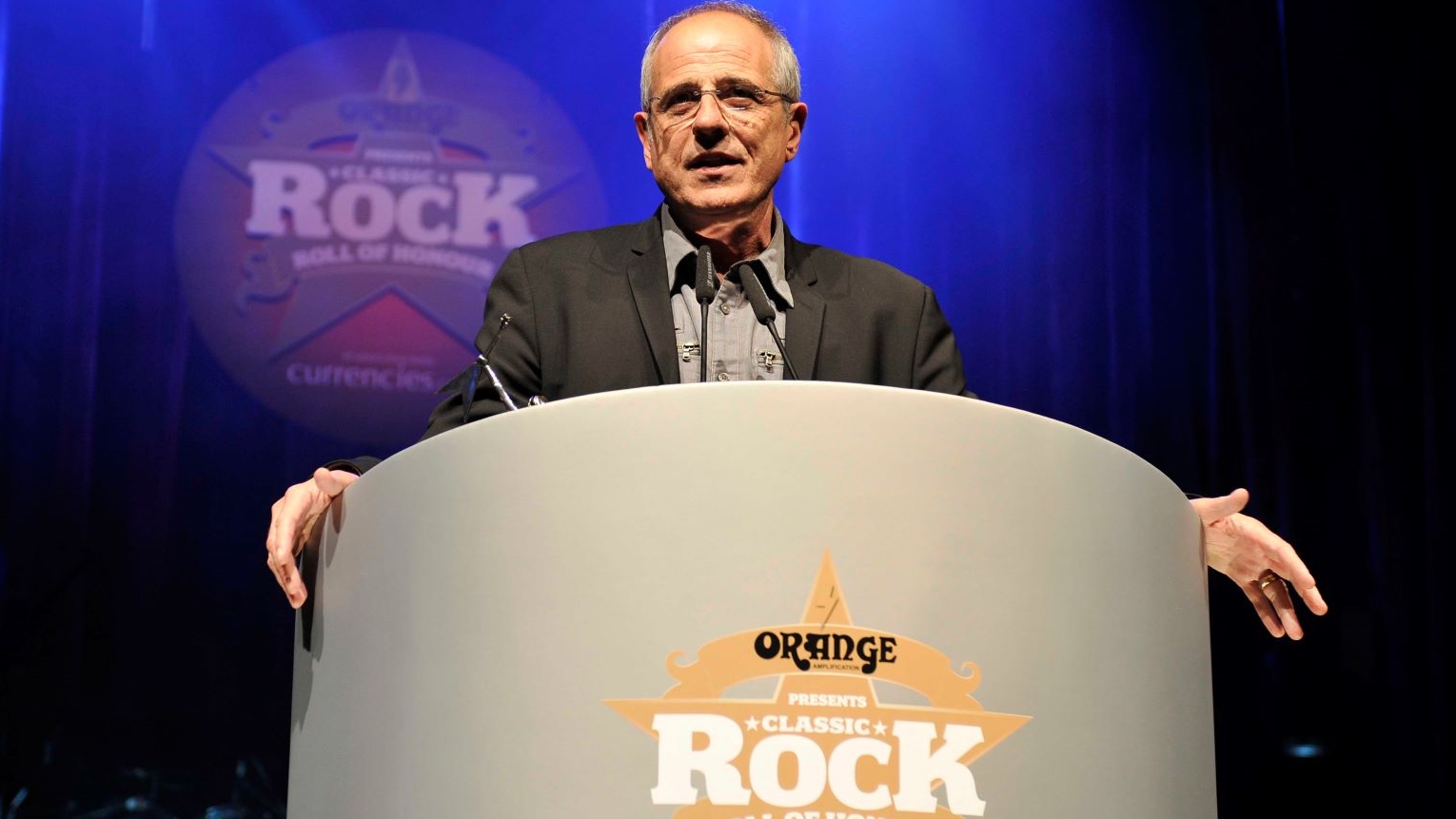
Ezrin had first joined forces with the Alice Cooper Band for their 1971 album Love It to Death. “Which was cinematic and atmospheric, yet still totally rock and roll,” Stanley continues. “His fingerprints are all over that stuff, so it was just a no-brainer that he should be our one and only choice for Destroyer.”
In making their first three albums, Kiss had simply written the songs, then gone into the studio to record them before heading out on tour. It was a straightforward process, the way presumably every record was made… except that in Ezrin’s world, there was a little thing called “pre-production” that had to be factored in. It was a first-time experience for Kiss, who must have suddenly felt like they were back at school.
“Actually, brutal boot camp was more like it,” Stanley says, wincing. “Bob definitely had a whistle round his neck. At the time, of course, we were basking in the glory of our success with Kiss Alive!, and we weren’t exactly open to outside opinion. But we listened to him because he was, well, right! With Bob, it was ‘Teach us!’ ”
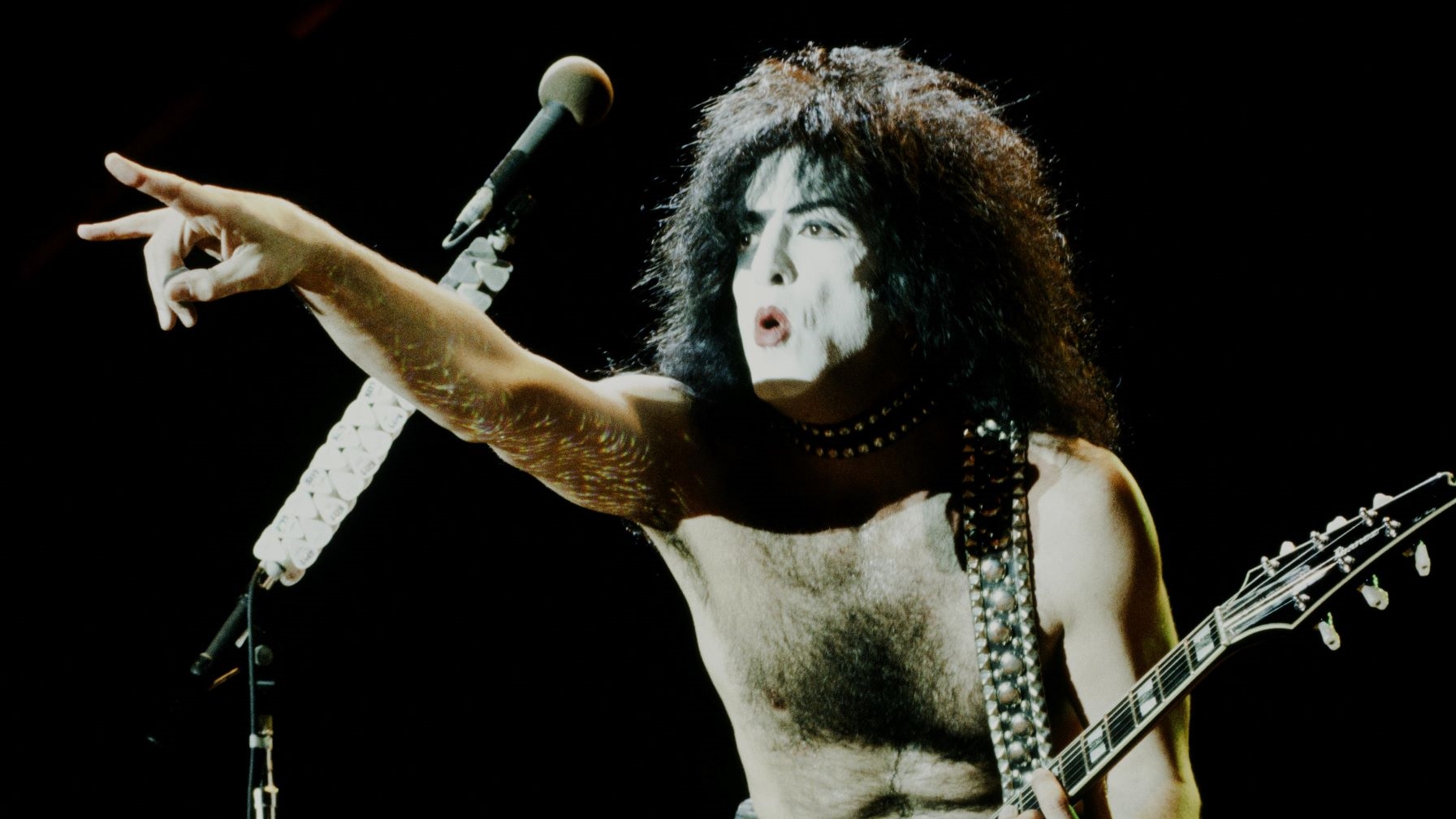
Three years later, Ezrin would be in the studio with David Gilmour, Roger Waters et al helming the Pink Floyd classic The Wall, so the Kiss camp can at least reflect with pride that they put their faith in a hit maker. But it wasn’t a decision they reveled in at the time. Not only did the Toronto-born taskmaster insist that they tune their own instruments – he also arranged them in a circle, Alcoholics Anonymous style, going through the material with an attention to detail usually reserved for military maneuvers.
“Sometimes he’d ask for most of the band to leave the rehearsal space so he could focus in on a particular person,” Stanley recalls. “He might want to run through the drum beat to ‘Detroit Rock City’ with Peter, or maybe talk to Gene about the song’s bass part, which incidentally is based on Curtis Mayfield’s ‘Freddie’s Dead’ [from the soundtrack to the 1972 movie Superfly]. The rehearsals were long, but they were exciting. And it wasn’t just the music he was pushing us on; it was the lyrics too. The ‘fuck me’ songs were out.”
The rehearsals were long, but they were exciting
Paul Stanley
While most of the material was pieced together in the circle, with choruses, verses and bridges run up the flagpole in the hope of an Ezrin salute, a couple of Stanley songs were nearly in the can. “God of Thunder” was, to all intents and purposes, complete, while “Detroit Rock City” had a solid chorus but was still seeking a theme.
The song’s turning point came when Stanley remembered a show in North Carolina where, tragically, a fan had been killed by a car outside the venue. Straight away, Ezrin saw it could be the meat of the tune. He set about encouraging Stanley to complete the lyric, the end result being the story of a kid who hears about his own demise on the radio. (And despite what you may have read on the internet, Gene doesn’t voice the part of the radio reporter in the track’s intro.)
The choice of Detroit for the song’s setting was no arbitrary thing. It was the city that gave Kiss a boost early on. Though known primarily for Motown, the Motor City is a rock and roll town – witness acts like Bob Seger, Grand Funk, the MC5, Ted Nugent and the Stooges – and it embraced the group on its first tours. For that matter, when performing at the city’s Cobo Hall on January 26, 1976, Stanley introduced “Rock and Roll All Nite” as a song written in and for Detroit. Given the band’s relationship with the city, it was only natural to spotlight it in the title of Stanley’s new rocker. But in many ways, “Detroit Rock City” is about every place that likes to shake loose.
“God of Thunder,” meanwhile, would prove to be a double-edged sword for the man known as the Starchild. It was a great song, no doubt, but one Stanley had written for himself. “When Bob said Gene should take the lead vocal, I just couldn’t believe it,” he says, still sounding surprised. “That’s the thing about working with a real producer; he can keep the band focused by assuming control, and that’s generally a good thing… apart from when he disagrees with me.
“Of course, it was absolutely the right call, but it was hard for me to appreciate the logic at the time. I was speechless.”
That’s the thing about working with a real producer; he can keep the band focused by assuming control
Paul Stanley
And it wasn’t just Simmons who made his presence felt on the song – Ezrin’s young sons David and Josh were given a “big moment” too, providing the eerie-sounding vocals that stoke up the atmosphere. “They were wearing little space helmets with walkie-talkies built into them,” Stanley recalls, “and they were saying, ‘I’m King Kong, I’m King Kong…’ That’s what you hear on the track.”
“Kiss Alive! had all the muscle and the spit,” Stanley explains, “but Bob replaced that with a cinematic feel. It was a night-and-day difference to what we’d done before, an altogether larger picture of who we were.”
“God of Thunder,” of course, was destined to achieve great things, and swiftly became a signature tune for a man for whom breathing fire and spitting blood were already a way of life. That was the thing about Destroyer – it was a concept album, but only in the sense that the concept was Kiss itself. The tracks allowed the band members to further bond with the fans by exploring and expounding upon their individual personas.
It was a night-and-day difference to what we’d done before, an altogether larger picture of who we were
Paul Stanley
Ezrin realized that turning these rock and roll heroes into rock and roll superheroes was the key to giving Kiss their biggest record to date, hence his insistence that Gene grab the mic for the self-trumpeting “God of Thunder.” Musical vehicles were duly constructed for other members too.
In Stanley’s case, it was “Do You Love Me?,” a song co-written with producer/songwriter (and Runaways manager) Kim Fowley. “It’s a song that deals with the age-old question, Do you like me for who I am or for what I have?” Stanley reflects. “But to be honest, I really didn’t give a rat’s ass. Back then, our lives were all about instant gratification. Commitment didn’t really come into it. We were enjoying our success.”
With Ezrin bringing the hammer down, there was little danger of filler creeping in below the radar, although the song that hovered closest to it was the tune selected for Criss: “Beth,” a grandiose orchestral outing that has been described by experts in the field of soft rock as the “proto-power ballad.”
Penned by the drummer and his former Chelsea bandmate Stan Penridge, the song received a serious sprinkling of fairy dust from Ezrin. Its roots stretch back to the early 1970s, when it had the title “Beck,” a name inspired by the girlfriend of Chelsea guitarist Mike Brand, who was forever on the phone while the band were in rehearsal. The title was tweaked to avoid confusion, and not only with Jeff Beck. “What’s a Beck?!” Stanley asks, with a shrug. “It just wasn’t a name that people could relate to.”
Originally released as the B-side of “Detroit Rock City,” the third single from Destroyer, “Beth” made an impact on radio as DJs flipped the seven-inch and gave it airplay. Soon after its release, the track received A-side status and charted at number seven, going Gold in the process and picking up a People’s Choice Award. Its success ensured Kiss’s hellfire-and-brimstone stage show would, for the foreseeable future, be tempered by the passing out of roses and the wafting of orchestral music through the PA.
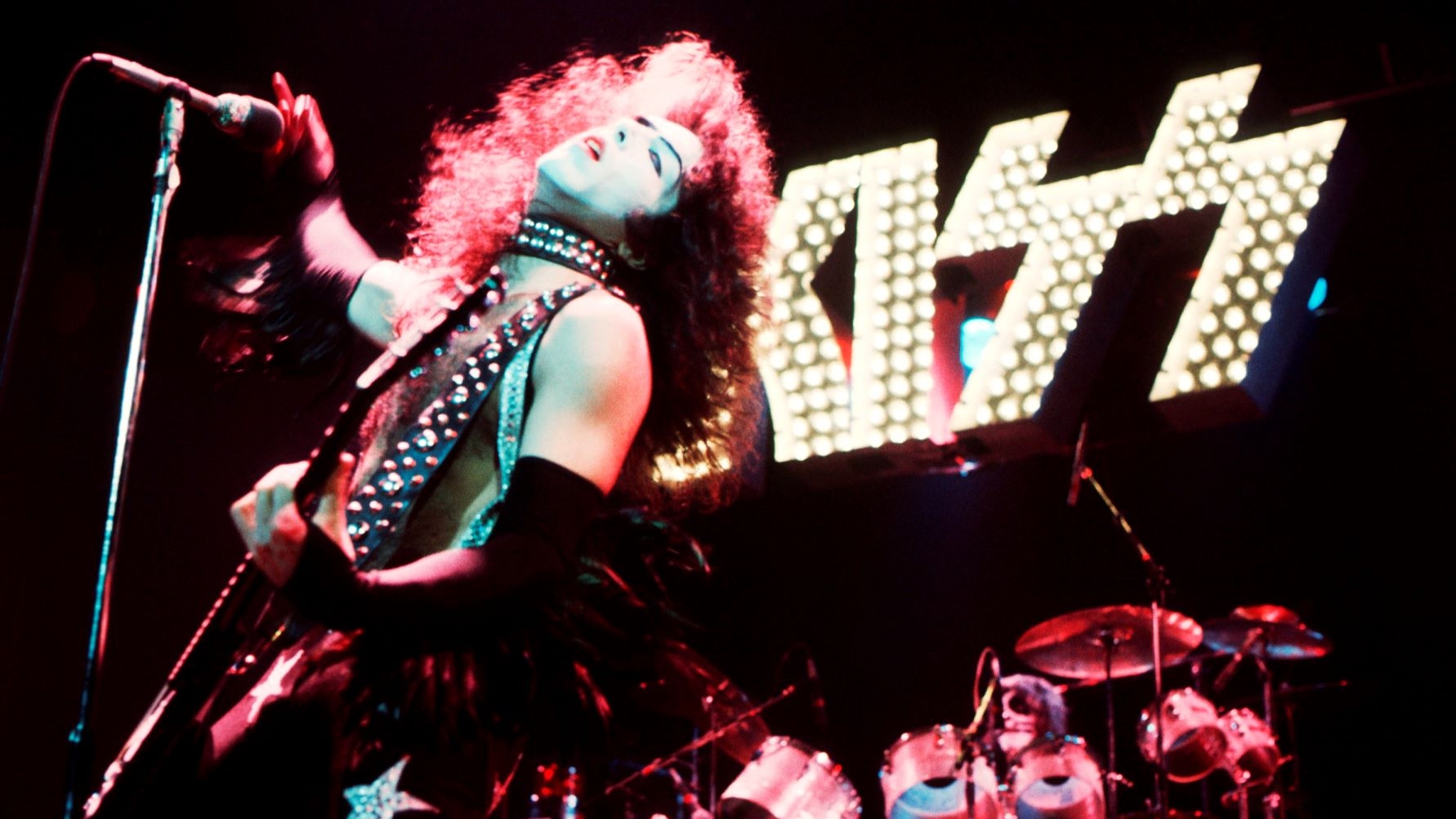
Ideally, Destroyer would have seen the fast-living Ace Frehley taking vocals on a track, something the other members had been encouraging him to do ever since he turned up years earlier with the best part of “Cold Gin” in his pocket. Not wanting to fully embrace the limelight at this point, Ace chose to put all his effort into the melodic, in-the-pocket guitar work that made him Stanley’s most excellent axe-slinging partner.
It wasn’t until the 1977’s Love Gun album that a bona fide all-singing/all-dancing Ace song arrived by means of “Shock Me.” “And the funny thing with ‘Shock Me’ was that Ace did all of the vocals lying flat on his back in the studio,” Stanley recalls. “He wasn’t drunk; he just liked the extra pressure on his chest.”
Of course, the Space Ace wasn’t unfamiliar with the horizontal position, having quaffed deeply from the rock and roll goblet. But with Ezrin in charge, there were rules in place for the first time. “Looking back,” Stanley reflects, “this was the start of a new and necessary mindset for us. Basically, if someone doesn’t turn up, the show must go on.
Ace has got his life under control these days. I have great fun talking with him
Paul Stanley
“You know, Ace has got his life under control these days. I have great fun talking with him. But things were different back then. It’s all been written about already, but he was succumbing to the excesses of the rock and roll lifestyle rather than taking advantage of its perks.”
Ace did his best to fall in line with Ezrin’s approach and take direction. Listening to “Detroit Rock City,” the producer dreamed up the dual-lead guitar break that takes the whole thing to a higher level of enjoyment. “And Bob sang that solo section note for note, then asked Ace to learn it,” Stanley recounts. “Including the harmony.”
But Ace wasn’t always up to snuff, and one occasion when Ace was, to all intents and purposes, lost in space, Ezrin ushered in Detroit session player Dick Wagner to provide electric guitar and acoustic guitar. A session and stage pro who had previously played credited and uncredited with Alice Cooper, Lou Reed and Aerosmith, Wagner was the only musician, apart from the band members themselves, to play an instrument on Destroyer, most notably for the solo in “Sweet Pain,” and he made no attempt to disguise his presence by fretting in Frehley fashion. He was onboard to do the best job he could, guided by a producer determined to use every trick in the book to wring out the magic.
Of course, some of Ezrin’s tricks were decidedly low tech. Today, it’s normal for drummers to lay down their parts to a click track, but the technology didn’t exist in 1976. Which is why Ezrin opted for a cigar box with a microphone inside, which he would tap with a drumstick to keep the musicians as much in line as possible.

It was this kind of precision, married to an ambition larger than Godzilla, that was the hallmark of Destroyer. With the band having granted Ezrin the benefit of “final say,” the producer was free to execute his vision. There was no holding back – no idea too grand to execute.
Though it’s tempting to call it “kitchen-sink production,” Destroyer’s sonic execution is more like a rocket-firing washing machine, with all manner of extra-curricular elements boldly set on spin cycle. With the Bronx Boys Choir on “Great Expectations,” the New York Philharmonic on “Beth,” a calliope on “Flaming Youth” and the sound effect of a car crash on “Detroit Rock City,” Destroyer had plenty to catch the ear and spark the imagination.
Pianos and power chords worked closely together, and all sound effects were printed directly to tape. A less self-assured producer would have recorded everything au naturel and added the required delay, distortion and what-not in the mix, but not Ezrin, who preferred to add the icing while the cake was being baked. “If you were to play the multi-track of Destroyer back through the mixing desk, it would sound just like the album,” Stanley confirms. “Everything would already be there.”
In keeping with the mighty sweep of the music, Destroyer saw the band going for broke on the visual side too. Out went the old costumes. In came a suitably all-conquering post-apocalyptic comic-book-chic look that gave the group a much-needed update to go with their sonic rehab. It was this look that painter/illustrator Ken Kelly – a relative of fantasy/ sci-fi illustrator Frank Frazetta – was asked to capture for Destroyer’s sleeve, the result of which was perhaps the most famous representation of the band ever.
It’s a magnificent piece of rubble-rousing art, sometimes copied, sometimes spoofed (as on the Sloppy Seconds album Destroyed), but forever loved. Unfortunately, when Kelly’s first painting showed the four members in their earlier Alive!-era costumes, he was forced to redo it.
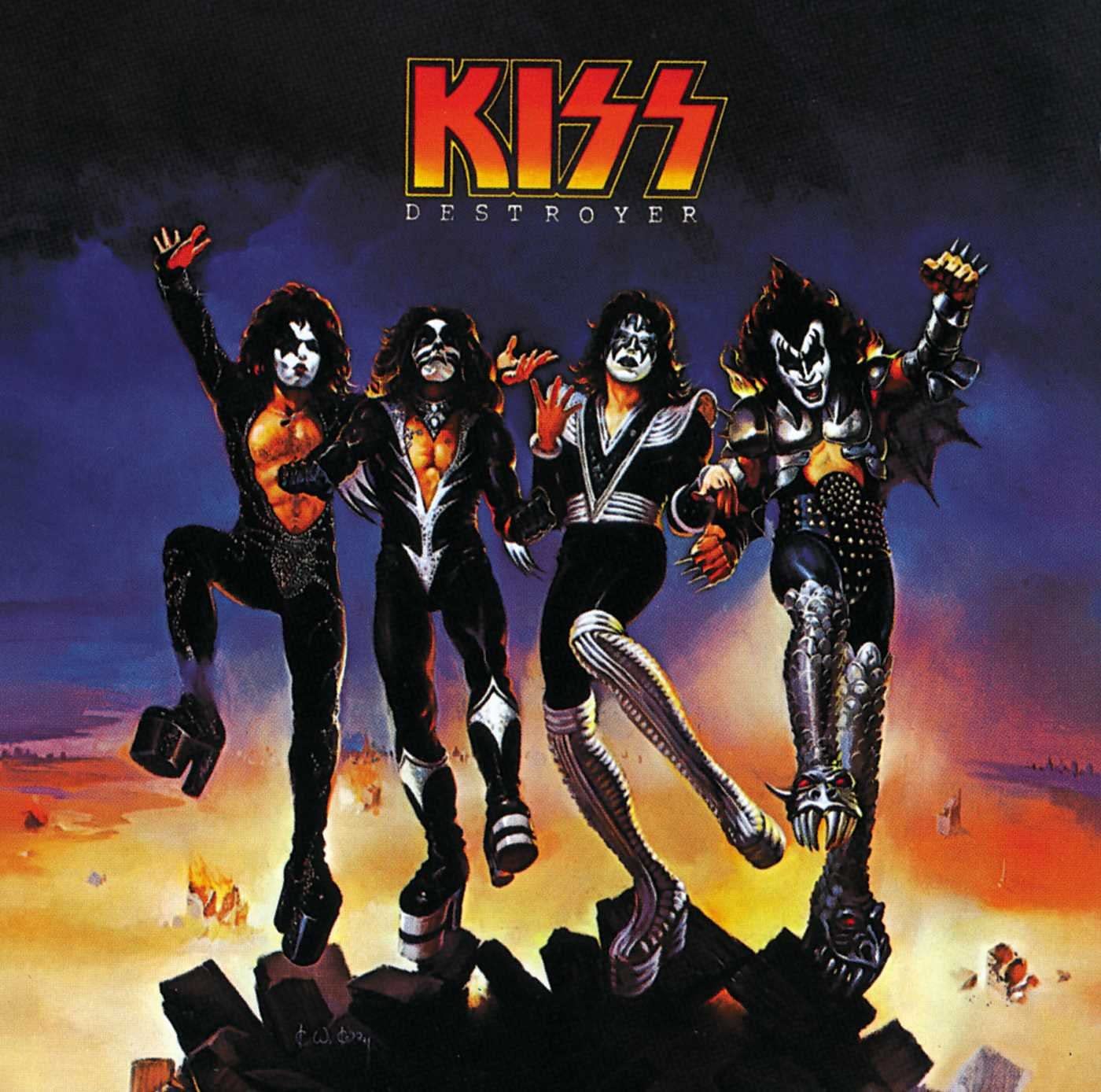
Considering how much Destroyer defined Kiss at the back end of a decade that saw them move from rehearsal-room hopefuls to multi-Platinum gods, it’s interesting to speculate whether their growth would have been the same were it not for the complete merging of image, music and message that takes place on this album. The band would hook up with Ezrin again for both a low point – 1981’s (Music From) The Elder – and a celebrated return to form – 1992’s Revenge – but the mojo would never work harder than it did here.
The songs have a truly majestic feel, without coming across as either pompous or contrived
Paul Stanley
The fact remains that time has been kind to Destroyer, a record still very much connected to its own hair and teeth. Even the previously hidden sonic montage “Rock & Roll Party” has come to sound like a relevant part of the album, when in fact it was put there purely and simply to soak up some time: Even with the inclusion of the roughly minute-and-a-half track, Destroyer clocks in under 35 minutes.
Ultimately, the album shows what can be achieved when the studio gods are grinning away like fools.
“I guess ‘swagger’ is probably the right word,” Stanley offers. “The songs have a truly majestic feel, without coming across as either pompous or contrived. Bob was just a joy to work with – the first genuine producer we’d put our trust in.”
Remarkably, for all Ezrin’s control over the proceedings, he couldn’t dissuade the band from their choice of title. “I know that he didn’t really like it,” Stanley says. “He thought ‘destroyer’ sounded negative, but for me it was too good not to use. This was one of those records where – from the music right through to the name – the planets were all in perfect alignment.”
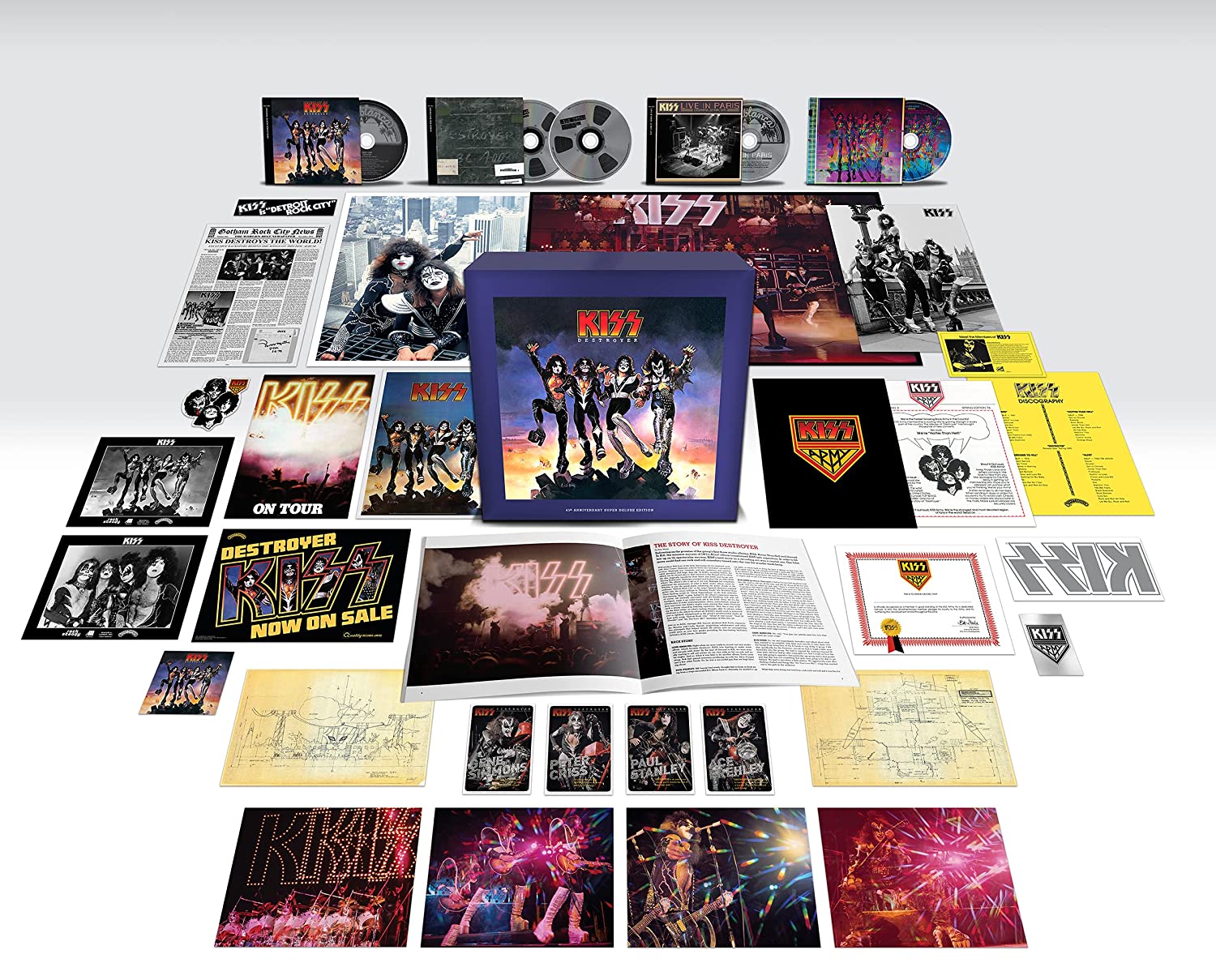
Buy the Destroyer: 45th Anniversary Super-Deluxe Edition here.
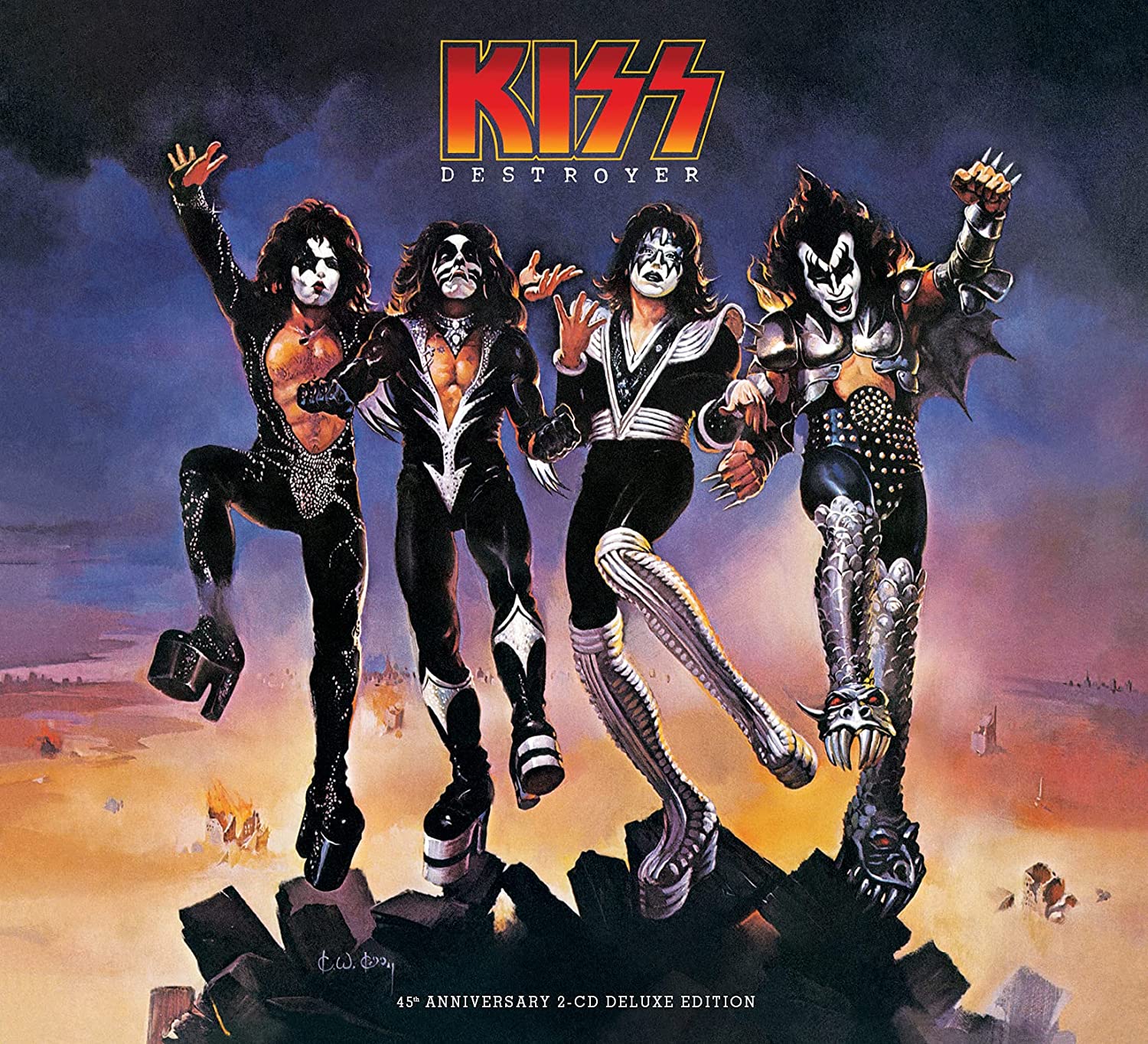
Buy the Destroyer: 45th Anniversary Deluxe Edition here.
